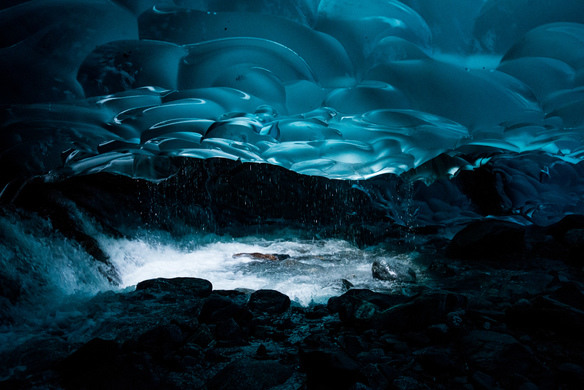Mendenhall Ice Caves: Hike This Incredible “Glacier Behind the Town”
The magnificent and melting ‘Mendenhall Glacier’ is a popular tourist attraction for the locals and visitors. Located in the Mendenhall Valley, this 13.6-...

The magnificent and melting ‘Mendenhall Glacier’ is a popular tourist attraction for the locals and visitors. Located in the Mendenhall Valley, this 13.6-mile long glacier is about 12 miles from downtown Juneau in the US state of Alaska. A federally designated unit of the Tongass National Forest protects the ice caves and their surrounding landscape as a part of Mendenhall Glacier Recreation Area.
Since 1942, the Juneau Icefield Research Program has been monitoring the outlet glaciers of the Juneau Icefield including Mendenhall Glacier. With a negative glacier mass balance, the glacier is in the retreating stage and has retreated more than 2.5 miles since 1500.
How Did “Mendenhall Ice Caves” Get Their Current Name?

The original name of the glaciers, given by the Tlingit people, was Sitaantaago ("the Glacier Behind the Town") or Aak'wtaaksit (A Latin name meaning "the Glacier Behind the Little Lake"). Back in 1988, it was named Auke (Auk) Glacier by naturalist John Muir for the Tlingit Auk Kwaan (or Aak'w Kwaan) band. In 1891-92, the Mendenhall Valley and glacier were named after physicist and meteorologist Thomas Corwin Mendenhall. (17.1)
The Glacier’s Retreat Resulted in Mendenhall Lake

The Mendenhall Lake formation took place in 1942 with the retreat of Mendenhall Glacier. The lake due to the runoff from glaciers and continuously increasing in size. A unique ecosystem lies in the lake and is a nursery for a number of fishes including salmon, Dolly Varden char, and cutthroat trout.
In 2012, an ancient forest under the glacier was uncovered which had tree stumps and logs with roots and bark still intact. Information on the ecosystem’s past from a pre-glacial era has is being discovered by observing these tree stumps and logs.
The scientists who had been observing the area determined how old the trees were when they died by looking at the remains. Cathy Conner, a scientist reported,
"The most recent stumps emerging from the Mendenhall are between 1,400 and 1,200 years old. The oldest are around 2,350 years old. Some have dated around 1,870 to 2,000 years old."
Mendenhall Glacier Visitor Center

As a part of Tongass National Forest, the United States Forest Service oversees the Mendenhall Glacier Visitor Center and offers interpretive programs round the year for both children and adults. The center is open throughout the year and witnesses 500,000 visitors each year. It has two accessible entrances- an upper entrance with a ramp and a lower entrance with elevators. (17.2)
The history of Mendenhall Glacier has been demonstrated and shows what it looked like when Joseph Whidbey, the master of the HMS Discovery, explored it in 1794. Based on climate change, a contrast to today’s conditions is depicted. A large variety of wildlife in the area is also exhibited in the nearby streams.
A pass of $5 or a Season’s pass of 15$ is required from May to September to see the exhibits, audio-visual presentations inside the center and to use certain outside infrastructure (including Steep Creek trail, Pavilion, Photo Point trail).Go & Trek the Adventurous Mendenhall Ice Caves!
(Video credits: CNN)
Popular Posts
10 Amazing Cities Built Near or Through Rivers
Rivers have been crucial to human settlements, commercialization, and building cities. This opens opportunities for trading goods and establishing international connections.
Kimberly Campbell
20 Most Futuristic Cities In The World
What do you think about the future? Does it bring thrill in you or terrifies you? What’s your take on high speed trains, miles...
Swati Bhandari
Mystery Of Baigong Pipes - 1,50,000 Old Construction Reveals The Ancient Technology
Baigong pipes are a series of ancient pipes found in and near Mount Baigong located about 40-45 km southwest of the city of Deli...
Kevin Green








